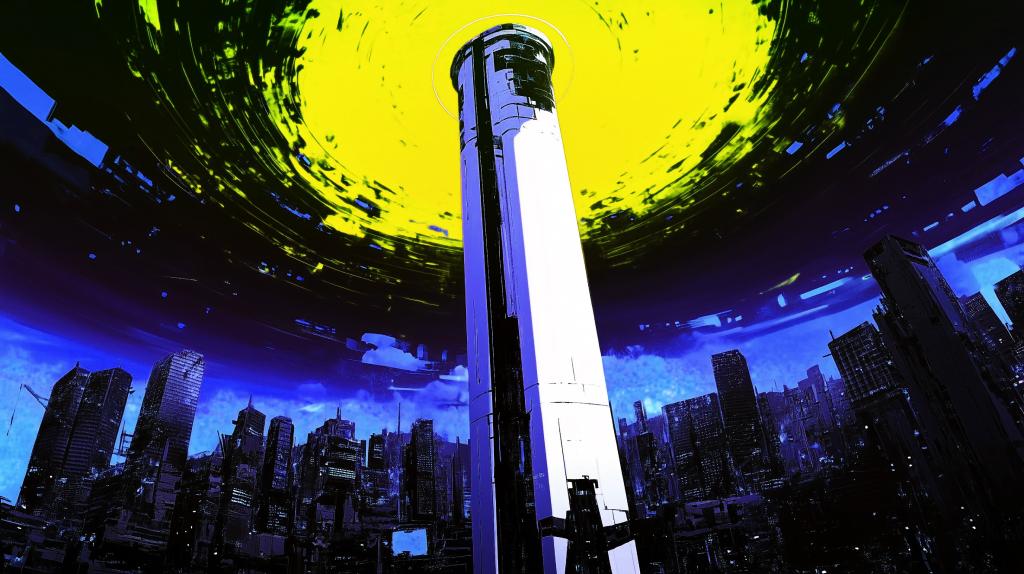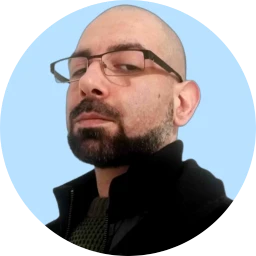Literary DNA: The Cyberpunk Roots of Transhuman Dream

Tracing the neon-lit path from classic sci-fi to a new dystopian vision
Ever wondered which groundbreaking works of science fiction influenced the dark, corporate-dominated world of Transhuman Dream? Behind every innovative universe lies a rich tapestry of literary and media inspirations that shaped its conceptual foundation. From neural interfaces to mega-corporations controlling society, from technological viruses to digital consciousness transfer, Transhuman Dream draws from decades of cyberpunk and transhumanist narratives that predicted our technological anxieties long before they became reality.
Neuromancer: The Blueprint for Digital Consciousness
No discussion of cyberpunk influences would be complete without acknowledging William Gibson's revolutionary 1984 novel that essentially created the genre as we know it today.
The Matrix That Started It All
When William Gibson introduced the concept of "cyberspace" in Neuromancer, he forever changed how we imagine human-computer interaction. The novel's protagonist, Case, was a "console cowboy" who could project his consciousness into a virtual realm — a clear predecessor to Transhuman Dream's AetherNet and AetherVerses.
"The matrix has its roots in primitive arcade games... in early graphics programs and military experimentation with cranial jacks." — William Gibson, Neuromancer
Key influences from Neuromancer found in Transhuman Dream:
- Neural interfaces connecting minds directly to digital environments
- Powerful corporations as the true rulers of society
- The blurring of reality and virtual experience
- Body modification as both enhancement and necessity
INSIDER PERSPECTIVE: Gibson wrote Neuromancer on a manual typewriter, having very little personal experience with computers at the time. Yet his visionary predictions about digital technology have proven remarkably prescient.
Ghost in the Shell: The Question of Digital Humanity
Masamune Shirow's manga series and its subsequent anime adaptations explore the philosophical implications of consciousness in a world where the line between human and machine has dissolved.
When the Soul Goes Digital
In Ghost in the Shell, the character of Major Motoko Kusanagi, a human consciousness ("ghost") housed in an artificial body ("shell"), raises profound questions about identity and existence that resonate deeply with Transhuman Dream's exploration of consciousness transfer and the AetherNet.
"What if a cyber brain could possibly generate its own ghost, create a soul all by itself? And if it did, just what would be the importance of being human then?" — Motoko Kusanagi, Ghost in the Shell
Elements that influenced Transhuman Dream:
- The philosophical exploration of consciousness beyond biological bodies
- Government agencies and corporations battling for control of technology
- The interconnected nature of human consciousness in digital networks
- Cybernetic enhancements as standard human modifications
TECH REVELATION: Ghost in the Shell's iconic "deep dive" sequences, where characters connect directly to digital networks, served as visual inspiration for many modern depictions of virtual reality, including the conceptualization of how users experience the AetherVerses in Transhuman Dream.
Blade Runner: The Corporate Dystopian Aesthetic
Based on Philip K. Dick's novel "Do Androids Dream of Electric Sheep?", Ridley Scott's 1982 film Blade Runner established the visual language of corporate dystopia that defines much of Transhuman Dream's atmosphere.
Neon Noir and Corporate Monuments
The rain-soaked streets, towering corporate headquarters, and omnipresent advertising of Blade Runner's Los Angeles created a template for dystopian urban environments that clearly influenced the portrayal of Neo Babylon in Transhuman Dream.
"The light that burns twice as bright burns half as long, and you have burned so very, very brightly." — Dr. Eldon Tyrell, Blade Runner
Blade Runner elements visible in Transhuman Dream:
- Mega-corporations with godlike power over society
- Artificial beings questioning their nature and rights
- Urban environments dominated by corporate architecture
- The aesthetics of technological decay and disparity
CINEMATIC SECRET: The original theatrical cut of Blade Runner featured a more optimistic ending than later director's cuts, reflecting the ongoing tension in cyberpunk between technological determinism and human agency. This theme is deeply embedded in the Transhuman Dream narrative.
Akira: Technology and Biological Transcendence
Katsuhiro Otomo's manga series and landmark 1988 anime film explores the catastrophic consequences of uncontrolled technological evolution merging with human biology — creating profound parallels with Transhuman Dream's exploration of technological viruses.
When Technology Rewrites Humanity
Set in a post-apocalyptic Neo-Tokyo, Akira depicts the emergence of psychic powers and biological mutations resulting from government experiments. This is a concept that resonates with Transhuman Dream's exploration of technological infections that transform humans.
"Perhaps all things in existence have that memory, but what if the order of things were disturbed, if through experimentation, an amoeba were transfused with the power of a human being?" — Kay, Akira
Elements from Akira reflected in Transhuman Dream:
- Technology infiltrating and radically altering human biology
- Metamorphosis from human to something beyond human
- Government attempts to weaponize technological evolution
- Societal collapse following technological catastrophe
EVOLUTIONARY PARALLEL: The transformation sequences in Akira, where human bodies grotesquely evolve into new forms, conceptually mirror the techno-viral transformations in Transhuman Dream where human tissue is progressively converted to mechanical elements.
Altered Carbon: The Commodification of Immortality
Richard K. Morgan's 2002 novel and its Netflix adaptation explore a future where human consciousness can be digitized and transferred between bodies, creating new forms of immortality and inequality.
When Death Becomes Optional
In Altered Carbon's world, human consciousness is stored in "cortical stacks" that can be transferred between bodies ("sleeves"), creating a society where the wealthy can live for centuries by purchasing new bodies while the poor remain trapped in mortality — echoing the class divides in Transhuman Dream's approaches to technological enhancement.
"The human eye is a wonderful device. With a little effort, it can fail to see even the most glaring injustice." — Takeshi Kovacs, Altered Carbon
Altered Carbon concepts paralleled in Transhuman Dream:
- Digital consciousness transfer as the ultimate luxury
- The ethical implications of effective immortality
- Bodies becoming commodities rather than identities
- Control over what once was considered the soul
PHILOSOPHICAL BRIDGE: The concept of "DHF" (Digital Human Freight) in Altered Carbon addresses many of the same philosophical questions about consciousness and continuity that Transhuman Dream explores through its AetherNet consciousness transfer technologies.
The Fusion of Influences: A New Synthetic Reality
What makes Transhuman Dream unique isn’t just its borrowing from these seminal works, but how it synthesizes their themes into something distinctly new. By blending the digital consciousness of Altered Carbon and Ghost in the Shell, the corporate dystopia of Blade Runner, the virtual realities of Neuromancer, and the unchecked human evolution of Akira, Transhuman Dream crafts a universe that feels both familiar to genre fans and urgently relevant to today’s world.
Beyond the Classics: Modern Influences
While the foundational cyberpunk works provided the template, Transhuman Dream also draws from more recent explorations of technology and society:
- The societal collapse narratives of Paolo Bacigalupi's "The Windup Girl"
- The corporate surveillance themes of Dave Eggers' "The Circle"
- The neuro-modification concepts from Ramez Naam's "Nexus" trilogy
- The technological viruses of Daniel Suarez's "Daemon"
- The digital afterlife explorations in "Black Mirror: San Junipero"
These modern influences ensure that Transhuman Dream doesn’t simply borrow from the past — it builds upon it. After all, the cyberpunk movement was never just about predicting the future; it was a warning. And now, standing on the shoulders of those prophetic works, we dare to ask a chilling question: what if the warnings came too late?
The Road Ahead: From Inspiration to Innovation
Transhuman Dream joins a proud literary tradition of using speculative fiction to examine our relationship with technology and power. By acknowledging its inspirations while forging new narrative territory, it participates in the ongoing conversation about where humanity might be heading and whether we'll like what we find when we get there.
What other cyberpunk works might inform future developments in the Transhuman Dream universe? How might contemporary concerns about artificial intelligence, climate change, and digital privacy shape the next evolution of this fictional world? The answers, like the technology in these stories, continue to evolve at a breathtaking pace.
Delve deeper into the literary foundations of Transhuman Dream by subscribing to our newsletter. Receive exclusive analyses, reading recommendations, and behind-the-scenes insights about how classic science fiction continues to shape this evolving universe. Read our blog and share this article with fellow cyberpunk enthusiasts!
- Authors

- Name
- Andrea Samà
- @in/andrea-sama
- Published on
- 7 min read